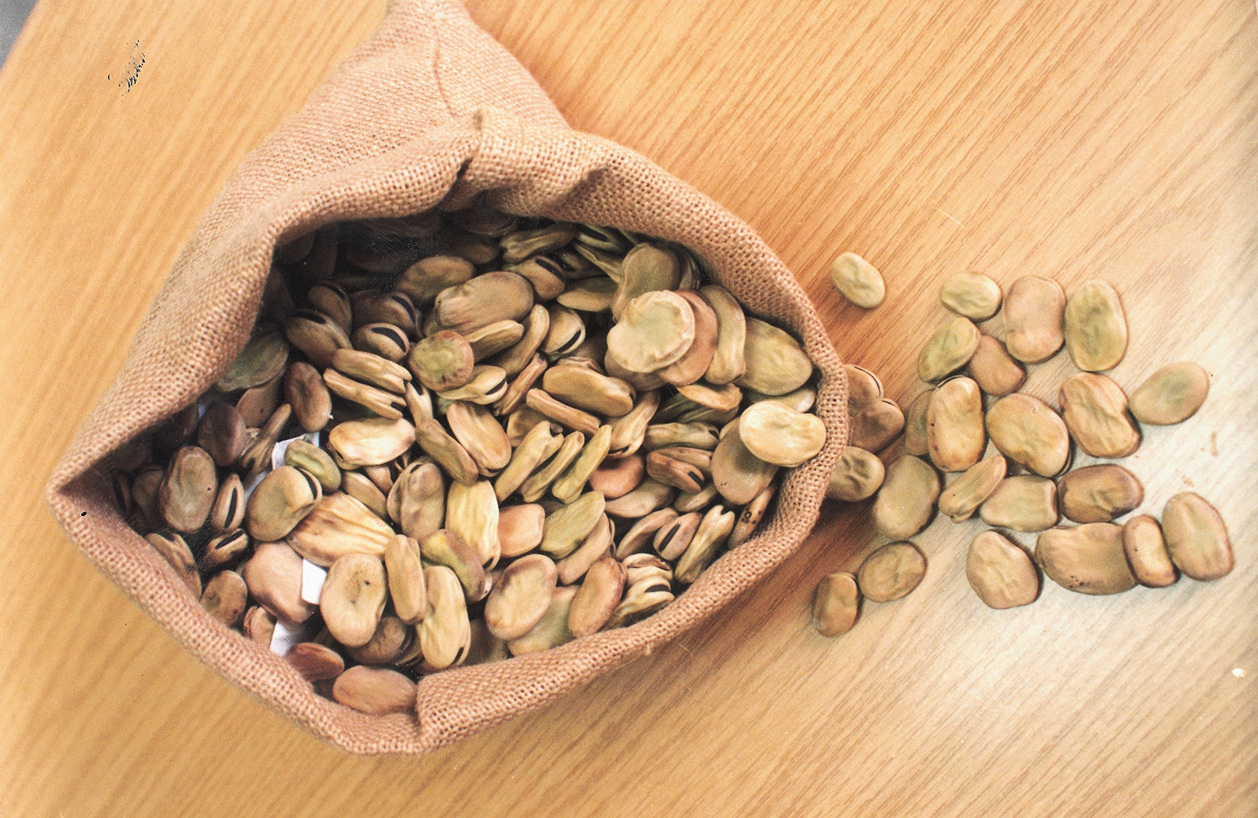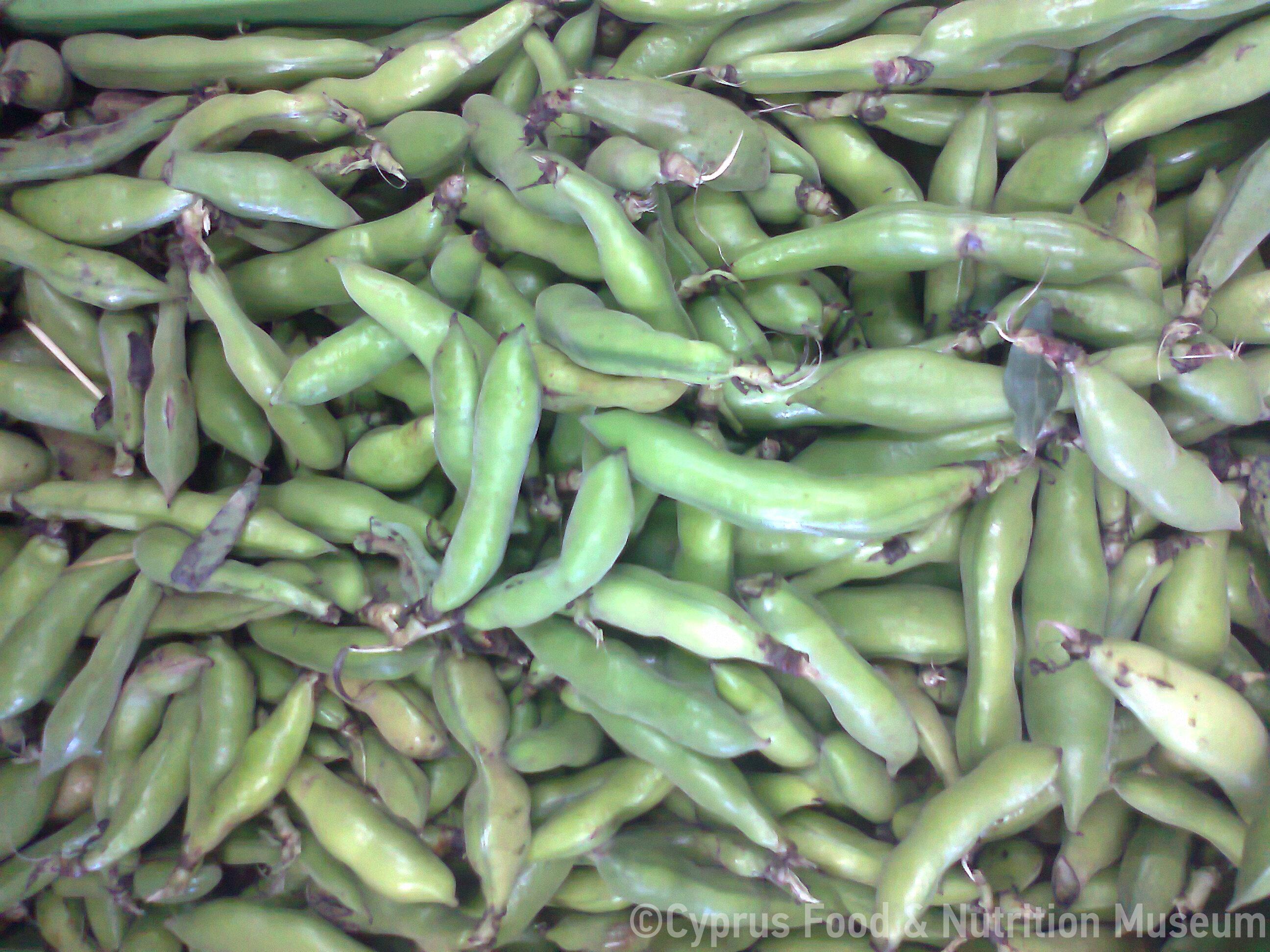Name - Origin
Κουκιά.
Koutsia belong to the Vicia faba family.
Dry koutsia are called koúnnes.
In Pitsilia area, fresh broad beans were called poumbouroúthkia (Arch. Hadjicostas, 1986).
In Mesaoria, legumes were cultivated in February and collected in the months of April and May. Women used to collect the legumes in the early morning hours when it was foggy and south wind. After collecting legumes, Cypriots would lay them out in the sun on the roof and then they would sift and store them (MANRE, 2009)
Functional and symbolic role
Broad beans were the most common type of legumes consumed by Cypriots (Chatzionas S, 1971). Cypriots would nevertheless praise their taste, saying that they were «γλυκά σαν μέλι» (sweet as honey). The villagers used to have lunch in the fields and it usually included bread, olives, onion and fresh broad bean leaves (Chatzionas, 1971). Housewives would cook the whole of the fresh broad beans, including the outer green part (Arch. Hadjicostas, 1986). Furthermore, they used to prepare them either fried with eggs or boiled with greens which included láhana (chard), beetroot leaves, zucchini and served with oil and lemon juice or vinegar (MANRE, 2009). The women of Pitsilia used to cook poumbourouthkia with a batter made with flour and garlic. In the old times, housewives used to prepare fresh borad beans yahni i.e. with grated tomato, while, on Sundays, they would add some meat. Dried broad beans called kounnes, would be boiled with greens such as chards and mangalous and eaten with oil and vinegar. They were served with onion, bread and tinned fish or herring. Adults would also consume raw fresh broad beans or soaked in water. In addition, they used to cook them with kolokasi, saying 'koutsia tze kolokasin, enan topon enna passin', meaning that although it may sound as an unusual combination, both will end up in one place (the stomach). Finally, Cypriots used to eat the first broad bean leaves (those that would be collected a month after sowing) raw with bread and olives as a prosfai (snack) or as a salad with lemon juice and oil (Arch. Hadjicostas, 1986).
Cypriots in financial distress or fasting used to eat broad beans frequently, around 3-4 times a week (Arch. Hadjicostas, 1986).
On Clean Monday and Maundy Thursday, housewives would prepare a soup called koutsiozoumin, which was a soup made with beans and vinegar (without oil).
Additional information and bibliography
A. Sakellarios mentions that the best legumes were produced in the village of Flamoudi, between Akanthous and Lefkoniko (Sakellariou, 1855).
Ministry of Agriculture, Natural Resources and Environment (2009) The cultivation of the louvi. Press and Information Office, Nicosia.
Chatzionas S. (1971) Το φαγητό στην Άλωνα. Λαογραφική Κύπρος, 1(3), σελ. 118-121.
Archimandrite Hadjicostas L. (1986) Τα κουκιά στη δίαιτα και την παράδοση του λαού μας. Λαογραφική Κύπρος, 16(36), σελ. 103-107.
Sakellarios AA.(1855) Τα Κυπριακά τόμος 1. Angelopoulou Publications, Athens.
Demetra Demetriou


